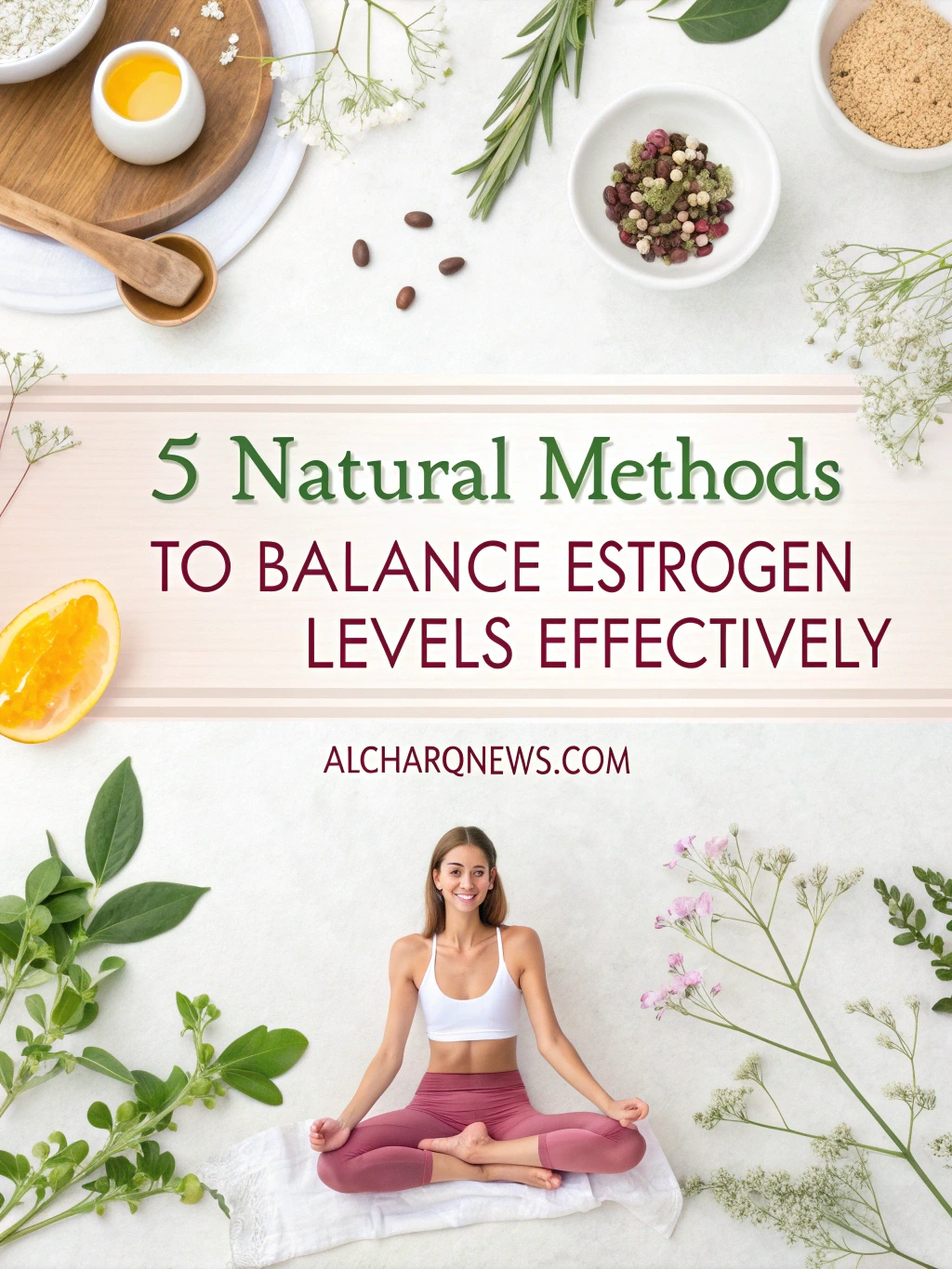When I first discovered my hormones were out of balance, it felt like my body had betrayed me completely. The unpredictable mood swings, mysterious weight gain around my middle, and bone-deep fatigue weren’t just inconveniences—they were stealing my quality of life. Perhaps you’re facing similar challenges right now, wondering why your body seems to be working against you.
What you’re experiencing might be estrogen dominance or deficiency—a remarkably common yet frequently overlooked hormonal imbalance affecting countless women and men worldwide. The encouraging news? Mother Nature offers powerful yet gentle solutions that can help restore your hormonal harmony without the troublesome side effects often accompanying synthetic hormone treatments.
Table of contents
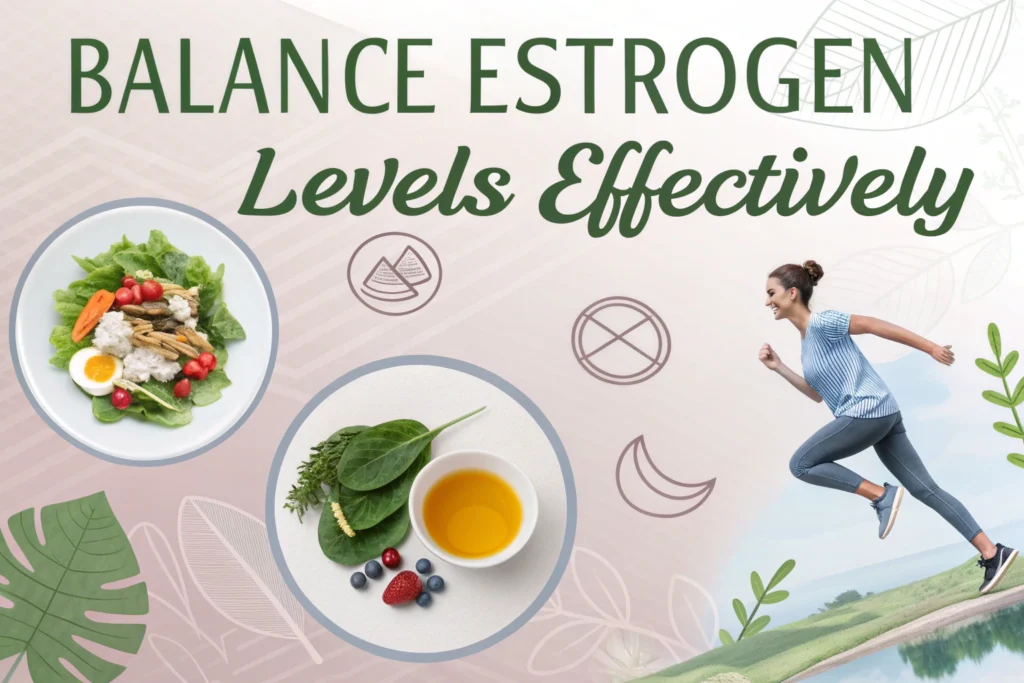
Understanding Estrogen: Your Body’s Powerful Chemical Messenger
What is Estrogen and Why is Balance Critical?
Estrogen isn’t just a reproductive hormone—it’s a sophisticated chemical messenger that influences nearly every system in your body. Beyond regulating your menstrual cycle and supporting pregnancy, estrogen affects your brain function, bone density, cardiovascular health, and even collagen production in your skin.
When your estrogen levels swing too high or dip too low, the ripple effects can be felt throughout your entire system. The delicate balance matters tremendously because estrogen works in concert with other hormones, particularly progesterone. When these hormones fall out of sync, your body notices—and lets you know through various uncomfortable symptoms.
Common Causes of Estrogen Imbalance
Your hormonal equilibrium faces constant challenges in today’s world. Environmental factors like xenoestrogens—synthetic compounds that mimic estrogen in your body—lurk in everything from plastic food containers to conventional cosmetics. Your diet plays a crucial role too, with certain foods either supporting or disrupting estrogen metabolism.
Lifestyle factors significantly impact your hormone health as well. Chronic stress elevates cortisol levels, which can suppress progesterone production and create relative estrogen dominance. Poor sleep quality disrupts your entire endocrine system, while certain medications—particularly hormonal birth control—directly alter your estrogen levels.
Age-related changes naturally affect estrogen production, with perimenopause and menopause bringing significant hormonal shifts. Various medical conditions including PCOS, endometriosis, and thyroid disorders can also throw your estrogen balance off kilter.
Estrogen Imbalance Symptoms Table
| Estrogen Dominance Symptoms | Estrogen Deficiency Symptoms |
|---|---|
| Weight gain around hips and abdomen | Hot flashes and night sweats |
| Mood swings and irritability | Vaginal dryness |
| Heavy or irregular periods | Irregular or absent periods |
| Breast tenderness | Bone density loss |
| Headaches | Memory problems |
| Decreased sex drive | Decreased sex drive |
| Fatigue | Fatigue |
| Hair loss | Dry skin |
Method 1: Dietary Changes to Balance Estrogen Naturally
Foods That Help Metabolize Estrogen
Your kitchen may hold some of the most powerful medicine for balancing your estrogen levels. Cruciferous vegetables stand at the forefront of estrogen-balancing foods due to their high content of glucosinolates—compounds that convert to indole-3-carbinol and diindolylmethane (DIM) in your body.
These plant compounds help your liver process estrogen more efficiently, directing it toward the beneficial metabolic pathways rather than the potentially harmful ones. Try incorporating broccoli, cauliflower, Brussels sprouts, cabbage, and kale into your meals several times weekly.
For maximum benefit, lightly steam these vegetables rather than boiling them extensively, which preserves their nutrient content. Aim for 1-2 cups daily, or supplement with DIM if consuming this quantity proves challenging.
Fiber-Rich Foods for Estrogen Regulation
Dietary fiber serves as a powerful ally in your quest for hormonal balance. Soluble fiber binds to excess estrogen in your digestive tract and escorts it out of your body, preventing reabsorption. Without adequate fiber, estrogen recirculates through your system in a process called enterohepatic circulation, potentially contributing to estrogen dominance.
Focus on incorporating ground flaxseeds, which offer both fiber and beneficial lignans that modulate estrogen activity. Other excellent fiber sources include chia seeds, psyllium husk, legumes, and whole grains. Strive for 25-35 grams of fiber daily, increasing your intake gradually to avoid digestive discomfort.
Foods to Limit or Avoid
Certain foods can undermine your efforts to balance estrogen levels. Conventional dairy and meat products often contain residual hormones that may influence your own hormone balance. When possible, choose organic, grass-fed, and hormone-free animal products.
Alcohol demands special consideration, as even moderate consumption can impair your liver’s ability to process estrogen effectively. Your liver cannot efficiently handle both alcohol and hormone metabolism simultaneously, so consider limiting alcohol to occasional consumption at most.
Processed foods frequently contain additives, preservatives, and inflammatory ingredients that burden your detoxification pathways and hormone-processing capacity. Focus on whole, unprocessed foods whenever feasible to support your hormonal health.
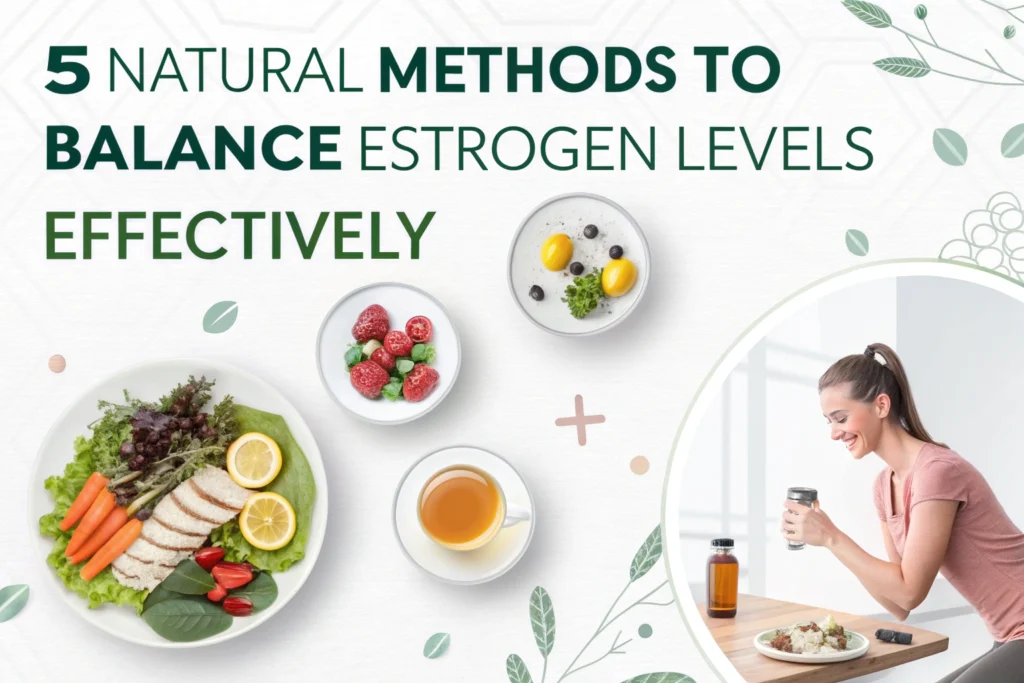
Method 2: Herbal Supplements for Hormonal Balance
Adaptogenic Herbs for Estrogen Support
Certain medicinal herbs have earned recognition for their remarkable ability to help normalize hormone levels. Among these, vitex (chasteberry) stands out for its ability to support progesterone production, which helps counter estrogen dominance. This herb works primarily on your pituitary gland, helping orchestrate hormonal balance throughout your system.
Maca root, a Peruvian superfood, doesn’t contain hormones but helps your body produce and regulate them more effectively. Many women report improvements in menopausal symptoms, menstrual irregularities, and overall energy levels when supplementing with maca.
Ashwagandha deserves special mention for addressing the stress component of hormonal imbalance. By moderating cortisol levels, this ancient adaptogen helps prevent stress-induced hormonal disruptions and supports overall endocrine function.
When considering herbal supplements, start with one at a time and give your body 2-3 months to respond. Quality matters tremendously with herbs, so choose standardized products from reputable companies.
Phytoestrogens: Plant-Based Estrogen Regulators
Phytoestrogens—plant compounds with structures similar to estrogen—offer fascinating benefits for hormonal balance. These compounds exhibit adaptogenic effects on estrogen receptors, meaning they can have either estrogenic or anti-estrogenic effects depending on your body’s needs.
If you’re experiencing estrogen deficiency, as in menopause, phytoestrogens can gently bind to estrogen receptors, providing mild estrogenic activity that eases symptoms. Conversely, in cases of estrogen dominance, these same compounds can block stronger estrogens from binding, effectively reducing overall estrogenic activity.
Excellent sources include red clover, flaxseeds, and fermented soy products like tempeh and miso. Traditional Asian diets, which incorporate moderate amounts of fermented soy, have been associated with fewer menopausal symptoms and better hormonal health overall.
Method 3: Lifestyle Modifications for Hormone Health
Stress Management Techniques
The connection between stress and hormonal imbalance cannot be overstated. Chronic stress elevates cortisol, which competes with progesterone for receptor sites and can create functional estrogen dominance even without excessive estrogen production.
Evidence-based stress reduction practices deserve priority in your hormone-balancing protocol. Regular meditation—even just 10-15 minutes daily—has been shown to reduce stress hormones and support overall endocrine balance. Yoga combines breathwork, movement, and mindfulness, making it particularly effective for hormonal health.
Nature therapy, or simply spending time outdoors in natural settings, demonstrably lowers cortisol levels and supports parasympathetic nervous system activation. Even brief exposure to natural environments can shift your body from stress mode toward rest-and-digest functioning, creating more favorable conditions for hormonal balance.
Exercise for Hormonal Balance
The right type and amount of physical activity powerfully supports estrogen balance, while excessive or insufficient exercise can worsen hormonal disruptions. Strength training deserves special emphasis, as muscle tissue influences insulin sensitivity and hormonal health throughout your body.
High-intensity interval training (HIIT) offers excellent benefits when kept brief (20-30 minutes) and limited to 2-3 sessions weekly. Excessive high-intensity exercise can backfire, raising cortisol and creating additional hormonal stress, particularly if you’re already dealing with adrenal fatigue or significant hormonal imbalance.
Walking, swimming, and other forms of low-intensity movement provide cardiovascular benefits without overtaxing your stress response system. Aim for daily movement, even if just a 20-minute walk, to support circulation, lymphatic flow, and overall hormonal health.
Estrogen-Balancing Exercise Plan
| Exercise Type | Frequency | Duration | Benefits for Hormone Balance |
|---|---|---|---|
| Strength Training | 2-3x weekly | 30-45 minutes | Builds muscle mass, boosts metabolism, supports healthy testosterone-estrogen ratio |
| Low-intensity Cardio | 3-5x weekly | 30-45 minutes | Reduces stress hormones, supports circulation |
| Yoga/Pilates | 2-3x weekly | 30-60 minutes | Reduces cortisol, improves mind-body connection |
| Walking | Daily | 20-30 minutes | Gentle activity that won’t tax adrenals, supports lymphatic flow |
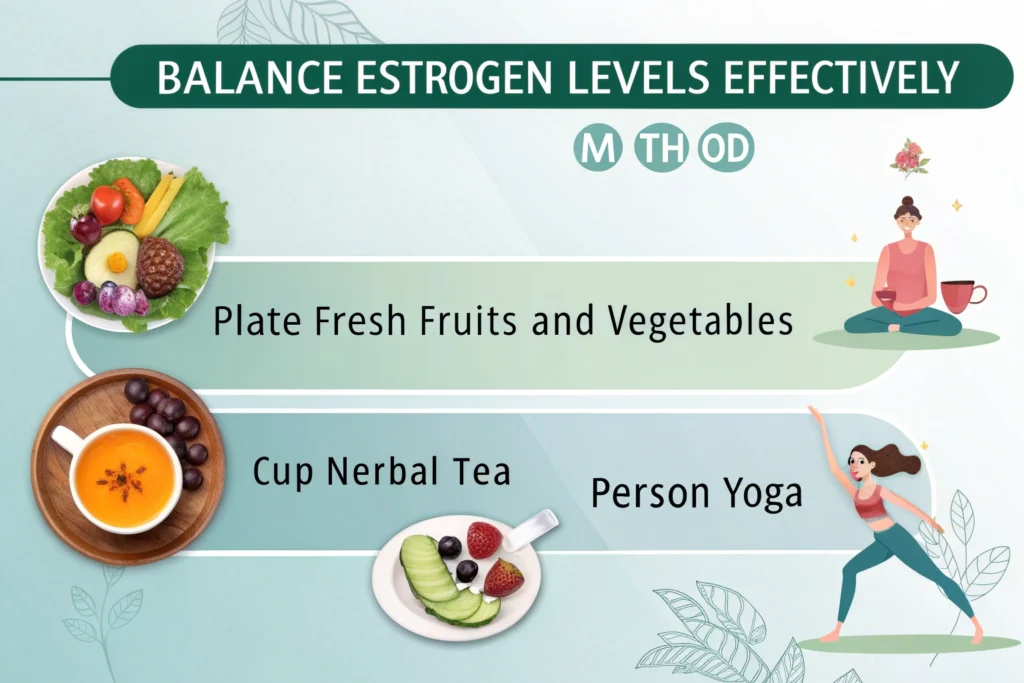
Sleep Optimization for Hormone Regulation
Quality sleep provides the foundation for hormonal health, yet it’s often overlooked in favor of more dramatic interventions. Your body performs crucial hormonal balancing work during deep sleep phases, and disruption to these cycles can significantly impact estrogen metabolism.
Practical strategies for improving sleep quality include maintaining consistent sleep/wake times—even on weekends—and creating a sleep sanctuary free from electronics, excessive light, and stimulating activities. The blue light emitted from screens blocks melatonin production, which not only affects sleep but also influences estrogen metabolism.
Temperature regulation significantly impacts sleep quality, with slightly cooler room temperatures (around 65-68°F/18-20°C) generally supporting deeper sleep. Consider your sleeping environment holistically, addressing noise, light, temperature, and comfort to create optimal conditions for restorative sleep.
Method 4: Environmental Detoxification
Reducing Xenoestrogen Exposure
The modern world exposes you to countless xenoestrogens—synthetic compounds that mimic estrogen in your body. These endocrine disruptors lurk in plastics, conventional cosmetics, cleaning products, pesticides, and even receipt paper.
Begin by addressing food storage, replacing plastic containers with glass or stainless steel alternatives. Particularly avoid heating food in plastic, which accelerates the leaching of estrogenic compounds. Water quality deserves attention too—consider a quality filter that removes common endocrine disruptors.
Your personal care routine offers another opportunity for reducing xenoestrogen exposure. Conventional cosmetics, fragrances, and skincare products often contain parabens, phthalates, and other hormone-disrupting chemicals. Resources like the Environmental Working Group’s Skin Deep database can help you identify safer alternatives.
Supporting Your Body’s Natural Detox Pathways
Your body possesses sophisticated systems for processing and eliminating excess estrogen, centered primarily in your liver and digestive tract. Supporting these natural detoxification pathways helps maintain healthy estrogen levels.
Liver-supportive foods and herbs deserve special emphasis. Milk thistle, dandelion root, and turmeric have demonstrated ability to enhance liver function and detoxification capacity. Cruciferous vegetables, mentioned earlier for their estrogen-metabolizing properties, also support liver detoxification pathways.
Ensuring regular, complete bowel movements proves essential for hormonal detoxification. Once your liver processes estrogen for excretion, it travels through your intestines for elimination. Constipation allows these hormones to be reabsorbed into circulation. Adequate fiber, hydration, and possibly magnesium supplementation can support healthy elimination.
Sweating represents another valuable detoxification avenue. Regular sauna sessions have been shown to help eliminate various toxins, including certain endocrine disruptors. Even modest exercise that induces sweating contributes to this detoxification process.
Method 5: Mind-Body Practices for Hormonal Harmony
The Emotional Component of Hormone Balance
The connection between your emotional landscape and hormonal health runs deeper than many realize. Chronic emotional patterns—particularly unresolved grief, persistent anxiety, or suppressed anger—create physiological stress that directly impacts your endocrine function.
Practices that facilitate emotional processing and release can significantly support hormonal balance. Journaling provides a simple yet powerful tool for identifying and working through emotional patterns. Therapy approaches like Emotional Freedom Technique (EFT) specifically address the mind-body connection, often yielding measurable physiological benefits.
The quality of your social connections also influences your hormonal health. Research consistently demonstrates that positive social relationships reduce stress hormones and support overall endocrine balance. Prioritizing meaningful connection with others constitutes a legitimate part of your hormone-balancing protocol.
Mindfulness Practices for Hormone Regulation
Growing research supports the effectiveness of mindfulness practices for hormone regulation. Regular meditation has been shown to reduce cortisol levels and influence estrogen metabolism. Even brief daily practices—5 to 10 minutes—can yield meaningful benefits when maintained consistently.
Body-centered mindfulness practices like yoga, tai chi, and qigong combine awareness with gentle movement, potentially offering additional benefits for hormonal health. These approaches help optimize the communication between your brain and endocrine system, supporting more balanced hormone production and metabolism.
Putting It All Together: Your 30-Day Estrogen Balance Plan
Implementing all these strategies simultaneously might feel overwhelming. Instead, consider a gradual approach that builds sustainable habits. Begin with one dietary change and one lifestyle modification, adding additional practices every week or two as you adjust.
Track your symptoms throughout this process, noting improvements or changes as they emerge. Remember that hormonal balance takes time—most women notice initial improvements within 2-3 weeks, but complete rebalancing often requires 3-6 months of consistent effort.
Conclusion: Reclaiming Your Hormonal Health Naturally
The journey toward balanced estrogen levels requires patience and consistency, but the rewards extend far beyond symptom relief. As your hormones find their natural equilibrium, you’ll likely experience improved energy, clearer thinking, more stable emotions, and an overall sense of reclaimed wellbeing.
Remember that hormonal health isn’t a destination but an ongoing practice. The foods you eat, the products you use, the way you move and manage stress—all these daily choices continuously influence your hormonal landscape. By making informed choices that support estrogen balance, you’re investing not just in immediate symptom relief but in your long-term vitality and health.
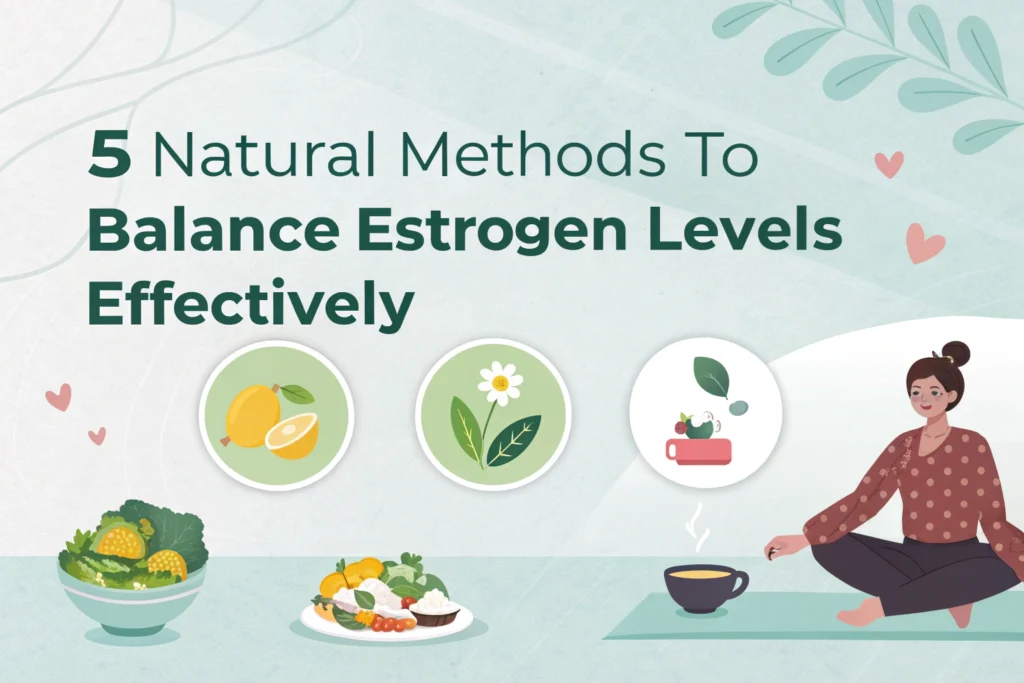
Frequently Asked Questions About Balancing Estrogen Levels
How long does it take to balance estrogen levels naturally?
Most people begin noticing improvements within 2-3 months of consistently applying natural methods to balance estrogen levels. However, complete hormonal rebalancing can take 6-12 months depending on the severity of the imbalance and individual factors. Your age, overall health status, and the specific causes of your imbalance all influence your timeline for improvement.
Can men also suffer from estrogen imbalance?
Yes, men can absolutely experience estrogen imbalance, typically in the form of excess estrogen. This can lead to symptoms like increased body fat (especially in the chest area), reduced muscle mass, low libido, and mood changes. The natural methods to balance estrogen levels discussed in this article can benefit men as well. As men age, the ratio between testosterone and estrogen often shifts, making estrogen balance increasingly important for men’s health.
Which foods are most effective for balancing estrogen levels?
Cruciferous vegetables (broccoli, cauliflower, kale) are among the most effective foods for balancing estrogen levels due to their high content of DIM (diindolylmethane), which helps the body metabolize estrogen properly. Ground flaxseeds, fiber-rich foods, and foods high in omega-3 fatty acids also significantly support estrogen balance. For optimal results, aim to include at least one serving of cruciferous vegetables daily and 1-2 tablespoons of ground flaxseeds.
Is soy helpful or harmful for balancing estrogen levels?
Soy contains phytoestrogens that can have either estrogenic or anti-estrogenic effects depending on your current estrogen levels and individual factors. For those with low estrogen, moderate amounts of organic, minimally processed soy may be beneficial. For those with estrogen dominance, limiting soy intake might be preferable while focusing on estrogen-metabolizing foods. Fermented soy products like tempeh, miso, and natto generally offer more benefits and fewer potential concerns than highly processed soy products.
How do I know if I have an estrogen imbalance without testing?
Common signs of estrogen dominance include weight gain around hips and abdomen, mood swings, heavy periods, breast tenderness, and fatigue. Estrogen deficiency often presents as hot flashes, vaginal dryness, bone density loss, and sleep disturbances. While these symptoms can indicate an estrogen imbalance, proper hormone testing provides the most accurate assessment. Consider working with a healthcare provider knowledgeable about hormonal health for appropriate testing and interpretation.
Can stress really affect my estrogen levels?
Yes, chronic stress significantly impacts estrogen balance by elevating cortisol levels, which can disrupt overall hormone production. When your body prioritizes cortisol production (the “fight or flight” hormone) during periods of chronic stress, it may “steal” resources from manufacturing other hormones, creating a cascading effect throughout your endocrine system. Stress management techniques are therefore essential components of any natural approach to balance estrogen levels effectively.

